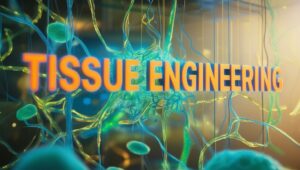Stem cells are like the body’s raw materials, and their role in regeneration and therapy is nothing short of fascinating. Imagine being able to heal damaged tissues or even grow new organs, stem cells make this a reality. But what exactly are they, and how do they work? Let’s dive into the world of stem cells and explore their incredible potential.
What Are Stem Cells?
What makes stem cells special? Stem cells are unique because they have the ability to develop into many different cell types in the body. Think of them as the building blocks of life. They can turn into muscle cells, brain cells, blood cells, and more, depending on what the body needs.
Types of Stem Cells There are two main types of stem cells:
- Embryonic Stem Cells: These come from embryos and can become any cell type in the body, which makes them very versatile.
- Adult Stem Cells: Found in adult tissues like bone marrow or fat, these are more limited in what they can become but are still incredibly useful.
How Do Stem Cells Work in Regeneration?
How do stem cells heal the body? Stem cells help the body by replacing damaged or lost cells. For example, if you get a cut, stem cells in the skin can generate new skin cells to heal the wound. This regenerative ability is why they are so important in medicine.
Real-life example: Stem cells in action Consider a person with heart disease. Doctors can use stem cells to grow new, healthy heart tissue to replace the damaged parts. This could potentially reduce the need for heart transplants in the future.
The Role of Stem Cells in Therapy
What diseases can stem cell therapy treat? Stem cell therapy is being explored for a wide range of diseases, including:
- Parkinson’s Disease: By replacing the damaged brain cells, stem cell therapy could help improve motor functions.
- Diabetes: Stem cells can be used to regenerate insulin-producing cells in the pancreas.
- Spinal Cord Injuries: Stem cells can help repair nerve damage and improve mobility.
Success stories in stem cell therapy One notable success story is the use of stem cells to treat leukemia. Stem cell transplants, also known as bone marrow transplants, have saved countless lives by replacing cancerous cells with healthy ones.
Concerns and Ethical Considerations
Are there risks involved in stem cell therapy? Yes, like any medical treatment, stem cell therapy comes with risks. These can include infection, the possibility of cells growing uncontrollably (leading to tumors), and immune rejection. It’s crucial for these therapies to be carefully tested and regulated.
Ethical issues surrounding stem cell research The use of embryonic stem cells raises ethical concerns because it involves the destruction of embryos. This has led to heated debates and strict regulations in many countries. However, advancements in adult stem cell and induced pluripotent stem cell (iPSC) research are helping to address some of these issues.
Future Prospects of Stem Cells
What does the future hold for stem cell therapy? The future of stem cell therapy looks promising, with ongoing research paving the way for new treatments and cures. Here are some exciting prospects:
- Personalized Medicine: Using a patient’s own stem cells to treat their unique medical conditions, minimizing the risk of rejection.
- Regeneration of Complex Organs: Scientists are working on growing entire organs, like kidneys or livers, from stem cells.
- Disease Modeling and Drug Testing: Stem cells can be used to create models of diseases in the lab, allowing for better drug testing and understanding of various conditions.
Real-life example: Hope for the future Imagine a world where diseases like Alzheimer’s or multiple sclerosis can be effectively treated or even cured. Stem cell research is bringing us closer to this reality, offering hope to millions of patients worldwide.
FAQs About Stem Cells
Can stem cells be used for cosmetic purposes? Yes, stem cells are being used in cosmetic procedures to rejuvenate skin, repair damaged hair follicles, and even grow new hair. These applications are becoming increasingly popular in the beauty industry.
How accessible is stem cell therapy? Currently, stem cell therapy is still mostly in the experimental stage for many conditions, but some treatments, like bone marrow transplants, are widely available. As research progresses, we can expect more therapies to become accessible to the public.
Conclusion
Stem cells hold immense potential in the fields of regeneration and therapy, offering new hope for treating a wide array of diseases and injuries. From healing wounds to potentially curing chronic diseases, their versatility and power are transforming medicine. As research continues to advance, the possibilities for stem cell therapy are endless, promising a future where many currently incurable conditions may be effectively treated.
By understanding the role of stem cells and staying informed about the latest advancements, we can better appreciate the incredible potential these tiny cells hold. Whether it’s through groundbreaking medical treatments or ethical debates, stem cells will undoubtedly play a crucial role in shaping the future of healthcare.






